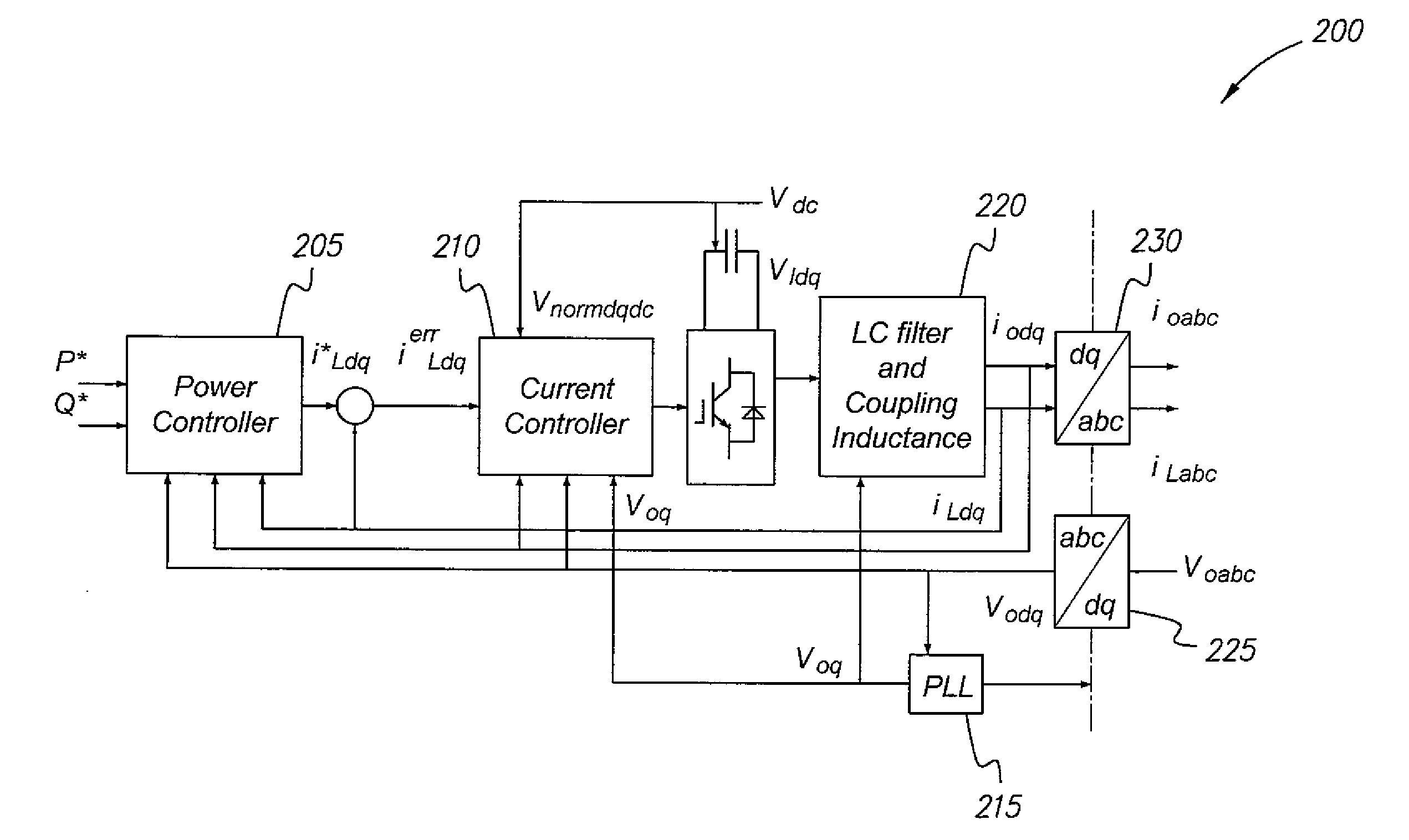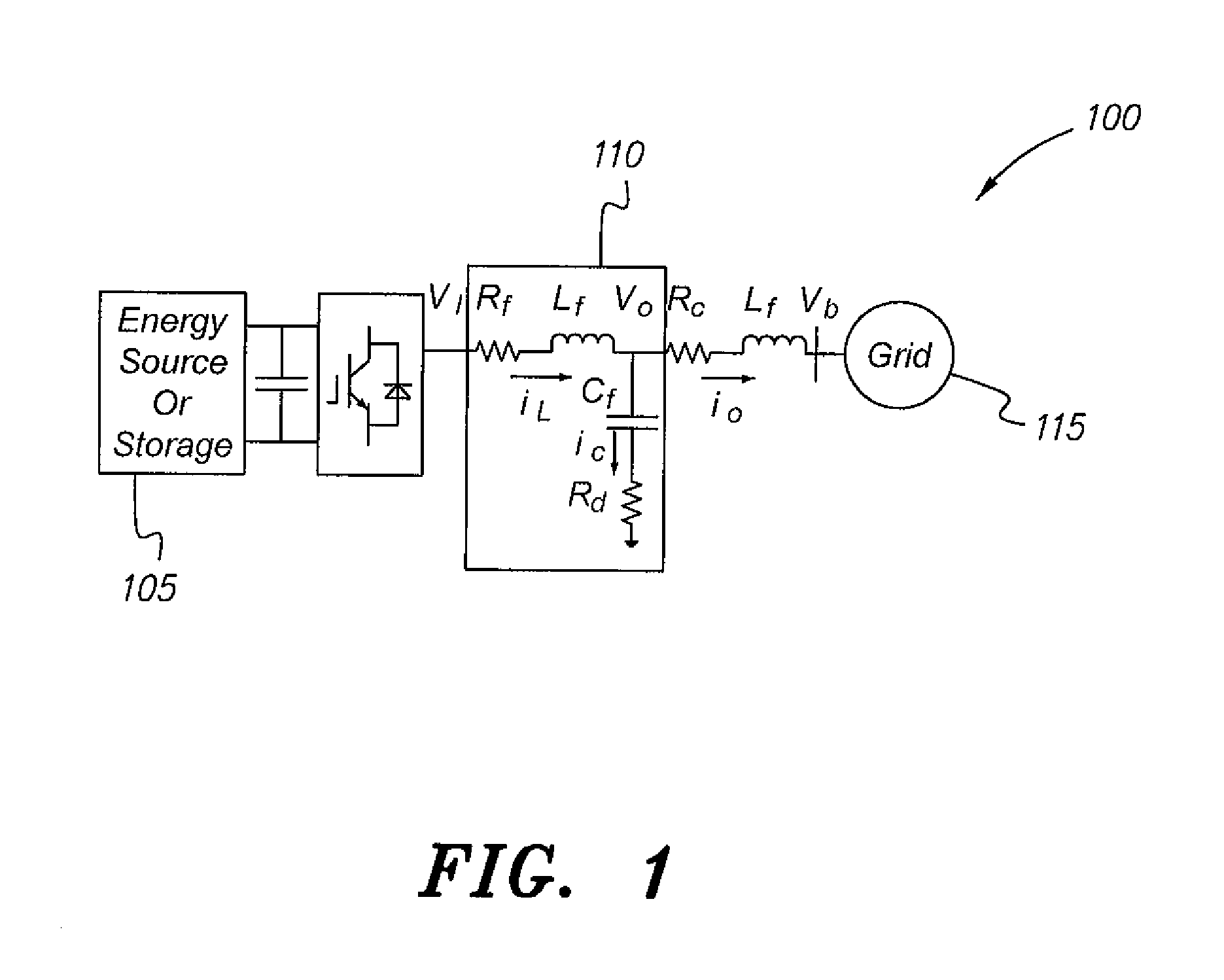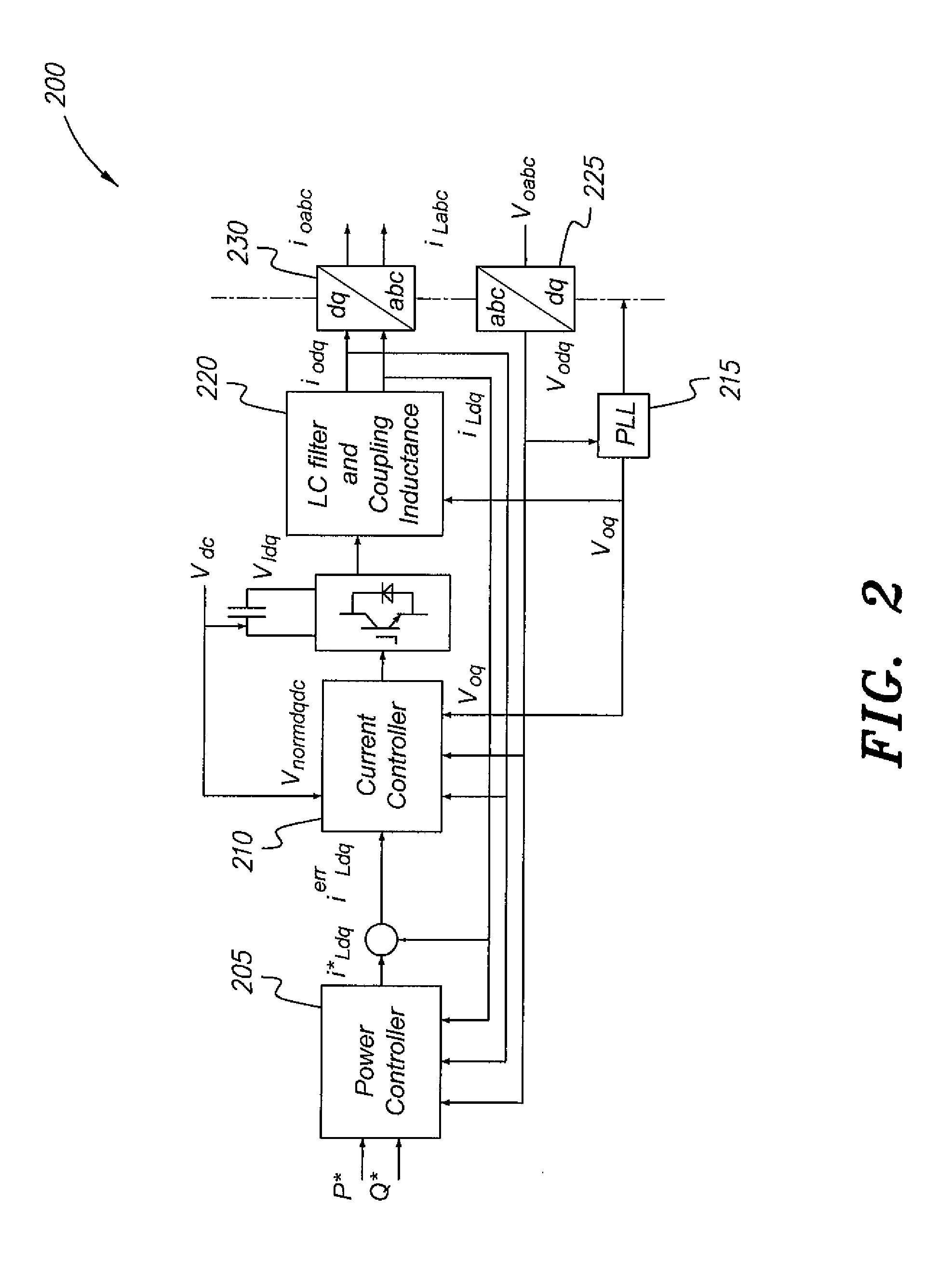Particle swarm optimization system and method for microgrids
a micro-grid and optimization system technology, applied in the direction of positioning/direction control, single network parallel feeding arrangement, instruments, etc., can solve the problems of no guarantee, no systematic procedure to solve controller design problems, and the micro-grid challenges the stability and control effectiveness of the micro-grid in both grid-connected and autonomous modes, so as to and enhance the stability of the micro-grid
- Summary
- Abstract
- Description
- Claims
- Application Information
AI Technical Summary
Benefits of technology
Problems solved by technology
Method used
Image
Examples
Embodiment Construction
[0049]The particle swarm optimization method for microgrids, described generally in the steps of the flowchart 1300 of FIG. 13, utilizes linear and nonlinear models operating in different modes. The method utilizes a single program code for modeling, optimization, linearization, and nonlinear time domain simulation. It will be understood that the diagrams in the drawings depicting the particle swarm optimization method for microgrids are exemplary only, and may be embodied in a dedicated electronic device having a microprocessor, microcontroller, digital signal processor, application specific integrated circuit, field programmable gate array, any combination of the aforementioned devices, or other device that combines the functionality of the particle swarm optimization method for microgrids onto a single chip or multiple chips programmed to carry out the method steps described herein, or may be embodied in a general purpose computer having the appropriate peripherals attached there...
PUM
 Login to View More
Login to View More Abstract
Description
Claims
Application Information
 Login to View More
Login to View More - R&D
- Intellectual Property
- Life Sciences
- Materials
- Tech Scout
- Unparalleled Data Quality
- Higher Quality Content
- 60% Fewer Hallucinations
Browse by: Latest US Patents, China's latest patents, Technical Efficacy Thesaurus, Application Domain, Technology Topic, Popular Technical Reports.
© 2025 PatSnap. All rights reserved.Legal|Privacy policy|Modern Slavery Act Transparency Statement|Sitemap|About US| Contact US: help@patsnap.com



